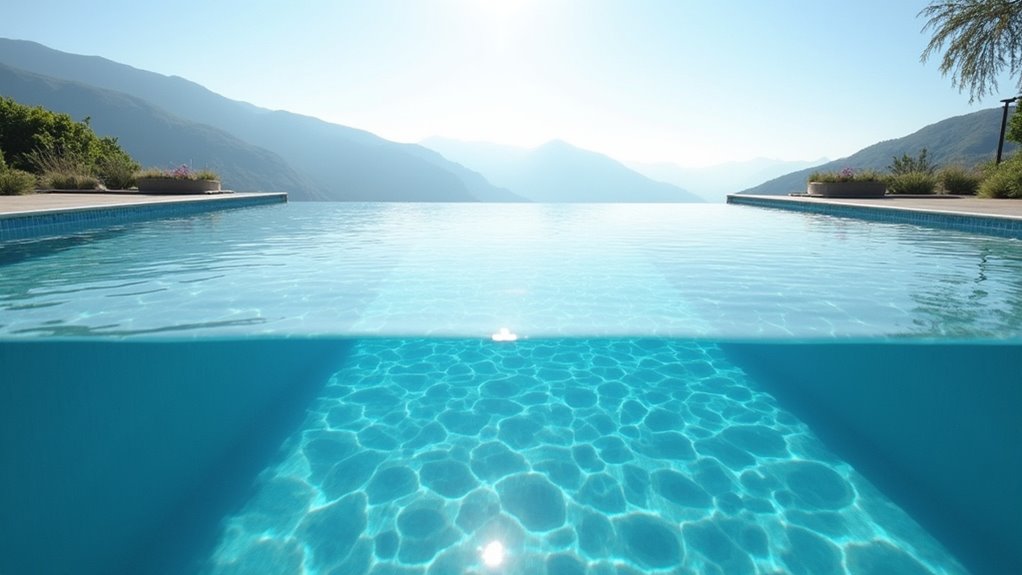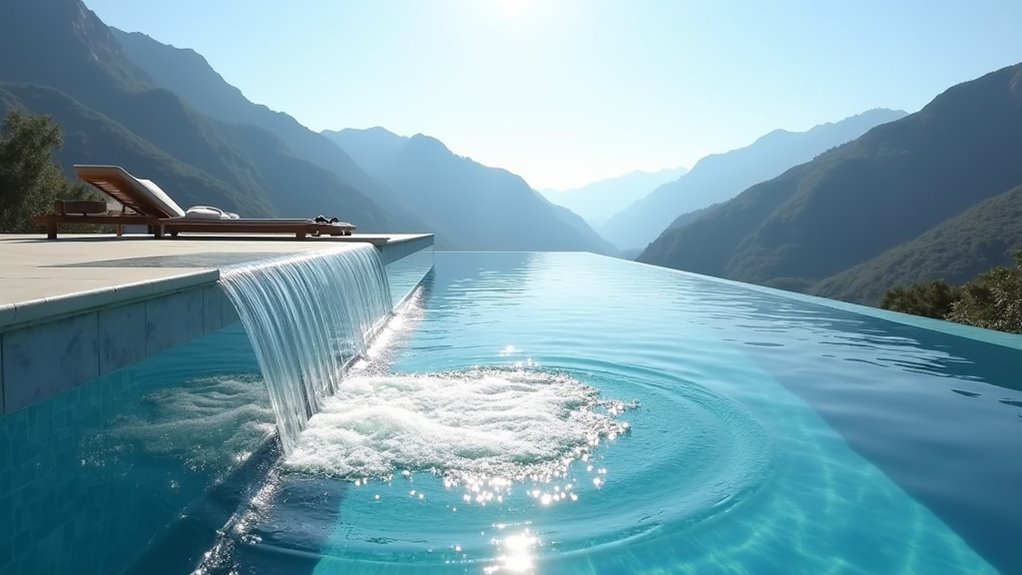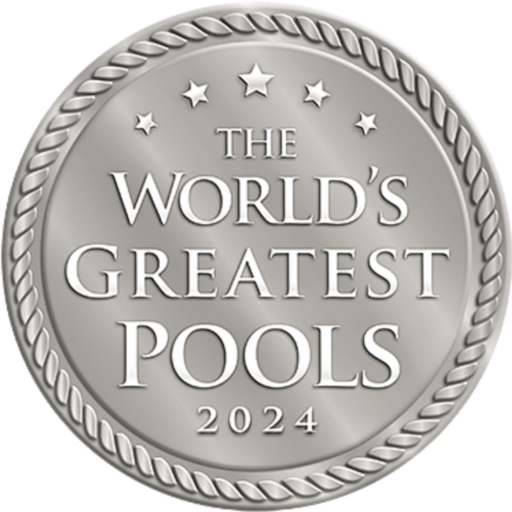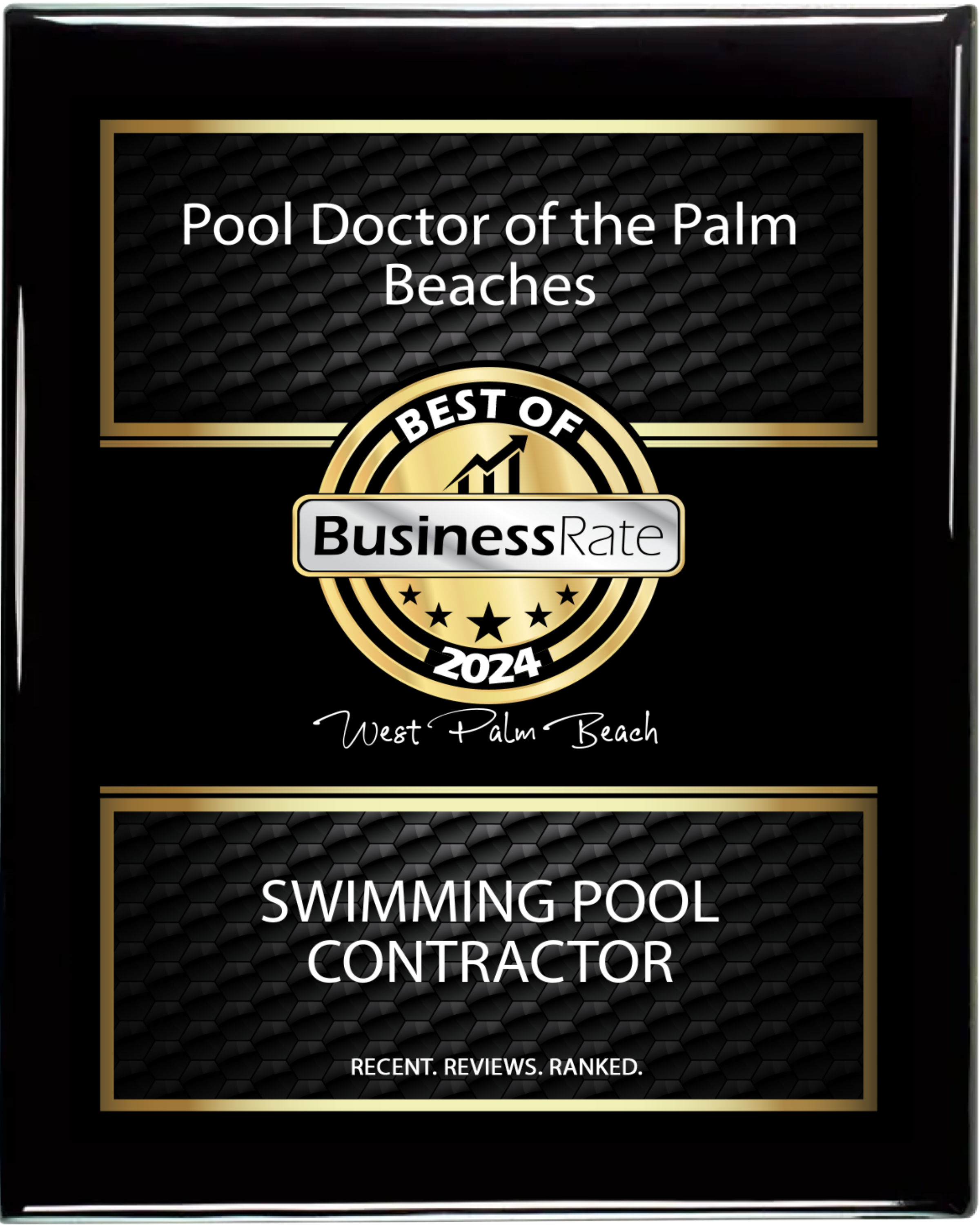An infinity pool creates a visual illusion through precise engineering, where water flows over a vanishing edge at 100 gallons per minute into a catch basin positioned 1/8 inch below the main pool rim. You’ll find a dual-pump configuration managing this process: a primary pump (75-100 GPM) handles filtration while a secondary pump (40-60 GPM) maintains edge flow. Water recirculates through collection troughs at 6-8 feet per second, with automated systems monitoring levels within 1/8 inch precision. The technical sophistication behind these pools extends far beyond their striking appearance.
Key Takeaways
- Infinity pools create an optical illusion using a vanishing edge where water flows continuously over one or more sides at 100 gallons per minute.
- A catch basin positioned slightly below the main pool rim collects the overflow water and recirculates it back through dual pump systems.
- Water flows over the edge at a precise 1/8-inch depth, maintained by sophisticated level sensors monitoring water height within 1/8 inch.
- The weir wall creates a perfect 90-degree edge angle, ensuring smooth water flow and enhancing the visual effect of the infinity edge.
- Automated control systems manage water balance, while pressure differentials maintain proper circulation at 6-8 feet per second.
The Basic Engineering Behind Infinity Pools

The engineering behind infinity pools relies on a precisely calculated vanishing edge, also known as a negative edge, that creates an optical illusion of water extending to the horizon. The edge design incorporates a catch basin positioned 1/16 to 1/8 inch below the main pool’s rim, allowing water to flow over in a controlled manner at a rate of approximately 100 gallons per minute.
The water circulation system operates through a dual-pump configuration. Your primary pump manages the main pool’s filtration, while a secondary pump, typically rated at 3 horsepower, handles the vanishing edge’s water return. The catch basin’s dimensions must accommodate 1/3 of the water volume that spills over the edge. This engineering guarantees constant water levels and maintains the seamless visual effect without overwhelming the system’s capacity.
Key Components of an Infinity Pool System

Modern infinity pool systems integrate five essential components that work in concert to create the signature vanishing edge effect. You’ll find these components carefully engineered to maintain ideal water balance and structural integrity.
Component | Function
—|—
Catch Basin | Collects overflow from vanishing edge
Primary Pump | Circulates water at 75-100 GPM
Level Sensors | Monitors water height within 1/8 inch
Weir Wall | Creates precise 90° pool edge angle
Control System | Manages automatic water balance
The catch basin’s capacity typically equals 25% of the main pool’s volume to handle overflow effectively. You’ll notice the weir wall’s precise engineering allows water to flow evenly across the infinity edge at 2-3 GPM per linear foot. The control system continuously adjusts water levels through integrated sensors, maintaining the illusion of the vanishing edge throughout operation.
The Role of Hydraulics and Water Flow

Building upon these core components, hydraulic systems drive water circulation through precisely calculated pathways that maintain the infinity edge effect. The system relies on hydraulic principles to create a seamless flow that tricks your eye into seeing an endless horizon.
- Primary pumps circulate 100-150 gallons per minute through the main pool, while secondary pumps manage 40-60 gallons per minute at the catch basin
- Gravity-fed water flows over the infinity edge at a precise 1/8 inch depth to maintain laminar flow
- Pressure differentials between intake and return lines maintain ideal water circulation at 6-8 feet per second
- Collection troughs capture overflow at a 15-degree angle, redirecting water through the filtration system before recirculation
This engineered system guarantees continuous flow while maintaining proper water levels and crystal-clear aesthetics.
Design Considerations and Site Requirements
When planning an infinity pool installation, vital site requirements must align with precise engineering specifications to achieve ideal visual impact. You’ll need a property with sufficient elevation differential, typically requiring a minimum 15-foot drop-off at the vanishing edge. Site orientation plays an essential role, as best positioning enhances aesthetic appeal through strategic viewpoint angles.
Your terrain must support structural loads of 2,000 pounds per square foot minimum, with bedrock or engineered fill providing adequate foundation stability. You’ll require precise grading calculations maintaining a 1/4-inch per foot slope for proper water flow. Furthermore, technical considerations include wind exposure ratings, seismic zone compliance, and soil percolation rates. Local building codes typically mandate 30-foot setbacks from property lines and natural grade changes.
Construction Methods and Materials
Proper construction of an infinity pool requires specialized materials and precision engineering techniques to guarantee structural integrity. You’ll find that modern infinity pools integrate sustainable materials and prefabricated panels to enhance construction efficiency while maintaining durability.
- The structural framework utilizes reinforced concrete with a 4,000 PSI minimum compression strength, supported by #4 rebar spaced at 12-inch intervals
- The catch basin’s walls incorporate prefabricated panels with a 3/8-inch waterproof membrane and a 2% slope for maximum water collection
- The vanishing edge requires precision-cut coping stones with a negative edge angle of 30-45 degrees
- The interior finish combines quartz aggregate with polymer-modified cement, creating a waterproof barrier rated at 12,000 PSI tensile strength
These specifications guarantee your infinity pool maintains its structural integrity while delivering the desired visual effect.
Maintenance and Operating Costs
The sophisticated engineering of an infinity pool directly impacts its long-term operational expenses. You’ll need to factor in specialized maintenance tips, including weekly skimmer cleaning and quarterly catch basin inspections. A detailed cost analysis reveals higher operational costs compared to traditional pools.
| Maintenance Item | Frequency | Annual Cost |
|---|---|---|
| Chemical Balance | Weekly | $1,200 |
| Edge Cleaning | Bi-weekly | $2,400 |
| Pump Service | Quarterly | $800 |
| Filter Replace | Annually | $500 |
| Basin Cleaning | Monthly | $1,800 |
Your infinity pool’s pumping system requires 30% more energy than standard pools, consuming approximately 2,400 kWh annually. You’ll need to maintain precise water levels at 1/8 inch below the edge for ideal cascade effect, requiring automated monitoring systems that cost $300-500 yearly to maintain.
Common Technical Challenges and Solutions
Three major technical issues commonly plague infinity pool systems, each requiring specific engineering solutions. To maintain peak performance and structural integrity, you’ll need to address these critical challenges:
- Water balance fluctuations can disrupt the precise 1/8-inch overflow tolerance required for the vanishing edge effect, necessitating automated leveling systems with ±0.5mm accuracy
- Structural settling of up to 1/4 inch can compromise the catch basin’s effectiveness, requiring reinforced concrete footings with 4,000 PSI minimum strength
- Wind-induced wave action may cause irregular overflow patterns, solved by installing wave-suppression baffles at 6-inch intervals
- Hydraulic pressure variations can affect pump performance, mitigated through variable frequency drive (VFD) systems maintaining constant 45-50 GPM flow rates
Safety Features and Regulations
Building upon the engineering aspects of infinity pools, thorough safety protocols must meet or exceed ANSI/APSP-7 standards for suction entrapment prevention and IBC Section 3109 requirements.
You’ll need to guarantee your infinity pool incorporates multiple layers of safety features, including dual main drains with anti-entrapment covers spaced at least 3 feet apart, automatic pump shutoff systems, and emergency stop buttons. Regulatory compliance demands safety barriers reaching a minimum height of 48 inches, with self-closing, self-latching gates that open outward.
Your pool’s catch basin must feature clearly marked depth indicators and non-slip surfaces meeting safety standards for wet conditions. Install underwater lighting at 0.5 watts per square foot of pool surface, and maintain proper chemical balances according to local health department specifications.
Environmental Impact and Water Conservation
While infinity pools create stunning visual effects, they require careful consideration of their environmental footprint through sustainable design practices and water management systems. You’ll need to implement specific sustainable practices to minimize the ecological footprint of your infinity pool:
- Install a high-efficiency filtration system that reduces water waste by up to 25% compared to traditional systems, while maintaining water quality at 7.2-7.6 pH levels
- Implement an automated cover system that reduces evaporation by 95% and maintains water temperature at 78-82°F (25.5-27.7°C)
- Use solar-powered heating systems that decrease energy consumption by 40-60% annually
- Incorporate a water recirculation system that captures and filters 98% of overflow water, reducing consumption by approximately 12,000 gallons per year
These conservation measures guarantee your infinity pool operates efficiently while minimizing environmental impact.
Modern Innovations in Infinity Pool Technology
Recent technological advancements have transformed infinity pools from simple vanishing edges into sophisticated aquatic systems. You’ll find smart automation at the forefront, with programmable control systems that monitor water levels within 0.1-inch precision and adjust circulation rates accordingly.
Modern infinity pools now incorporate energy-efficient variable-speed pumps that reduce power consumption by up to 80% compared to traditional single-speed systems. You can integrate these pools with your home’s smart technology, allowing remote management of temperature, chemical balance, and filtration cycles through mobile applications.
LED lighting systems with IP68 waterproof ratings provide improved illumination while consuming 75% less energy than halogen alternatives. Advanced overflow channels feature enhanced hydraulic designs that optimize water collection and redistribution, ensuring smoother edge flow and reduced maintenance requirements.
Frequently Asked Questions
Can Infinity Pools Be Heated During Colder Months?
Yes, you can heat your infinity pool during colder months through different heating options, including gas heaters, heat pumps, or solar heating systems. For best performance, you’ll need to maintain water temperatures between 78-82°F (25.5-27.7°C). During seasonal maintenance, verify your heating system’s efficiency by checking filters, inspecting heating elements, and using a pool cover to retain heat. Consider installing an automated temperature control system for consistent warmth throughout colder periods.
Do Infinity Pools Require More Insurance Coverage Than Regular Pools?
You’ll typically need improved liability coverage for an infinity pool due to its specialized design and increased risks. Insurance costs generally run 15-25% higher than standard pool policies to account for the intricate overflow systems and potential structural issues. It’s essential to secure thorough coverage that specifically addresses vanishing edge features, typically requiring a minimum of $500,000 in liability protection, plus supplementary structural damage coverage.
What Happens to Wildlife That May Fall Into the Catchment Basin?
If you find wildlife in your pool’s catchment basin, you’ll need to implement specific rescue protocols. Small animals like amphibians, birds, or rodents can typically escape via integrated wildlife ramps with a 30-45 degree slope. For larger animals, you’ll want to contact a certified wildlife rescue service. Most modern catchment basins feature protective grates with 1/2-inch mesh spacing to minimize wildlife entry, while still maintaining ideal water flow functionality.
Can You Add Special Features Like Underwater Music Systems to Infinity Pools?
You can integrate underwater speakers and sound systems into your infinity pool through specialized marine-grade audio equipment. The installation requires waterproof speakers rated at IP68, typically mounted at depths of 18-24 inches below water level. You’ll need a dedicated amplifier system that operates at frequencies optimized for underwater sound transmission (between 1-10 kHz). The speakers must be properly grounded and connected to a waterproof junction box for safety compliance.
Are Infinity Pools Safe for Small Children and Pets?
While infinity pools can be safe, you’ll need to implement specific safety measures. Install ASTM-compliant pool barriers at least 48 inches high around the vanishing edge, and maintain constant child supervision within 10 feet of the water. You should add non-slip surfaces with a minimum coefficient of friction of 0.6 around the catch basin area. For pets, install specialized pet barriers with vertical spacing no greater than 4 inches to prevent accidental access.



